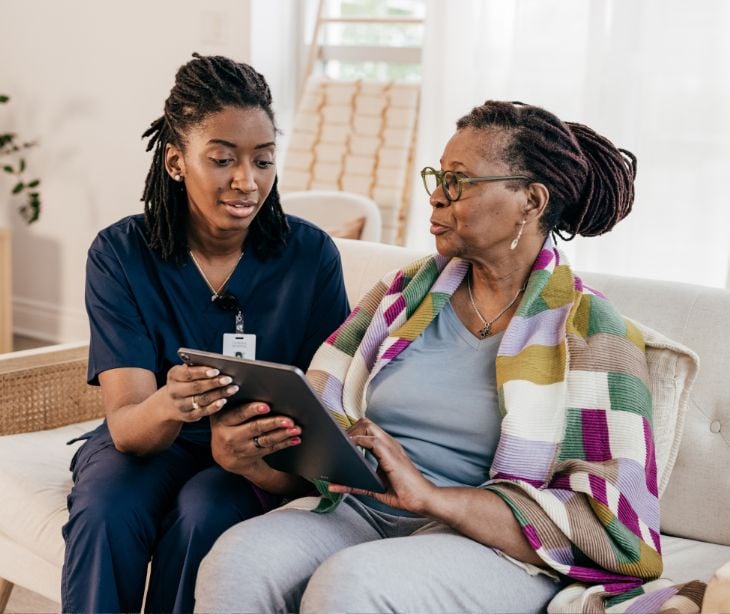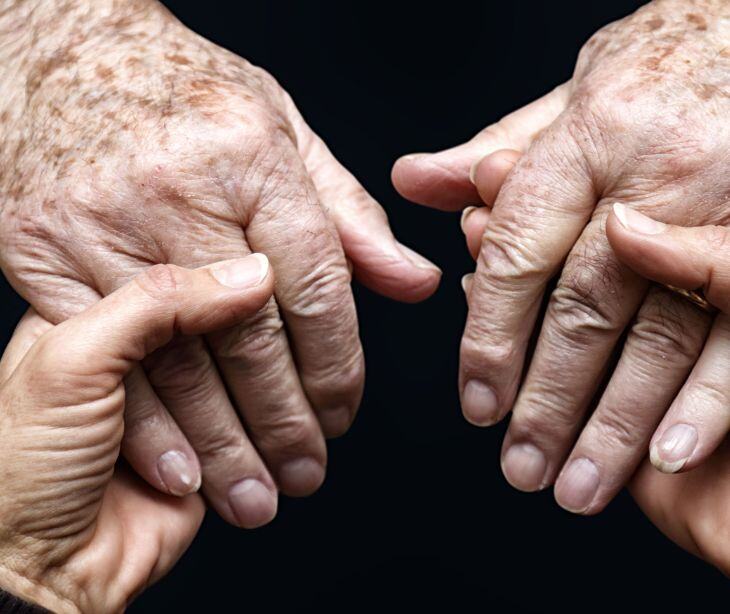3 min read
Can HIPAA compliant text messaging be used with palliative care?
Kirsten Peremore
April 01, 2024

Text messaging can supplement traditional communication methods by bridging the physical gap in palliative care. This is especially useful when relatives cannot be present due to geographic distance or other commitments.
The use of text messaging over traditional methods in palliative care
For a communication method to be effective in palliative care, it must ensure privacy and security while providing personalization and sensitivity. A BMC Palliative Care research study reveals that palliative care practitioners have increasingly integrated digital health technologies, including text messaging, into their practices. The study's findings can be summed up by: “Most respondents reported using a variety of digital health technology associated with clinical information systems, mobile devices, SMS text messaging, teleconferencing, and Wi-Fi. These technologies were used for the purpose of communicating with other health professionals, accessing web-based or mobile health palliative care resources, collecting or managing patient data, and providing information or education."
Compared to traditional methods, text messaging offers the advantages of immediate and direct communication, which can enhance coordination among caregivers and between caregivers and families. However, the use of text messaging must navigate challenges related to maintaining the privacy and security of patient information and ensuring that the communication remains personalized, empathetic, and sensitive to the needs of patients and their families. Overall, the study suggests that while text messaging and other digital health technologies are becoming more common in palliative care.
See also: How text messaging can help promote accessibility
The importance of the family experience
The family experience in palliative care deeply influences their psychological well-being, their ability to support the patient effectively, and their overall journey through the palliative care process. Families often grapple with uncertainty, emotional distress, and the need for timely information about their loved one's condition and care. A study assessing the impact of population aging on the future provision of end-of-life care was discussed. The study anticipated an increase in the need for palliative care, particularly at home and in care homes, highlighting an urgent requirement for enhanced communication strategies to support the growing number of families navigating end-of-life care scenarios.
Text messaging emerges as a method of directly addressing several common challenges faced by families. It allows healthcare providers to deliver quick and concise updates, which is invaluable when waiting for information can add to a family's stress. The immediacy of text messaging also allows families to receive timely notifications about changes in the patient's condition. This creates an environment where prompt decisions can be made, which is a comfort in itself.
As the study suggests, with the rising trend of deaths occurring at home or in care homes, the ability to maintain clear and effective communication becomes even more necessary. Text messaging can facilitate this by allowing families, who may be geographically or unable to be physically present at all times, to stay connected to the care process. This level of inclusivity and engagement is necessary for ensuring that the care provided aligns with the patient's and family's wishes.
See also: Text Messaging and HIPAA for home healthcare providers
How to integrate personalization and sensitivity in palliative care text messages
- Personalized greetings and closings: Begin each message with a personalized greeting using the recipient's preferred name or title, and end with a thoughtful closing that reflects warmth and professionalism.
- Language and tone awareness: Adapt the language and tone to match the recipient's cultural background, education level, and emotional state. Use straightforward language that avoids medical jargon, ensuring messages are easily understood.
- Cultural competence: Recognize and respect cultural differences in communication preferences, health beliefs, and end-of-life care practices. Tailor messages to honor these cultural aspects, showing respect for diverse backgrounds and preferences.
- Acknowledgement of emotional state: In your messages, acknowledge the likely emotional state of the recipient. Phrases like "We understand this may be a difficult time for you" can demonstrate empathy and sensitivity to their situation.
- Choice of content: Customize the content based on the recipient's needs and the patient's stage in the palliative care journey. Provide immediately relevant and useful information, avoiding unnecessary details that could overwhelm the family.
- Feedback loop: Encourage feedback by asking recipients how they prefer to receive information and what content is most helpful to them. Use this feedback to continually adapt and personalize future communications.
- Visual elements for clarity: When possible, incorporate visual elements like emojis or simple images that can convey empathy or clarify the message. Be cautious and culturally sensitive with your choices to ensure they are appropriate and understood as intended.
- Accessibility features: Ensure text messages are accessible, considering recipients who may have visual impairments or other disabilities. Offer information on how to access messages through voice-assisted devices or provide alternatives like email or voice messages that might be more accessible.
- Offering support resources: Beyond conveying information, include links or contact details for support services, such as counseling or community support groups, making it easier for families to find additional help.
See also: The guide to HIPAA compliant text messaging
FAQs
What is palliative care?
Palliative care is specialized medical care focused on relieving the symptoms and stress of a serious illness, aiming to improve the quality of life for the patient and their family.
How do healthcare professionals balance digital and in-person communication in palliative care?
Using digital tools for routine updates and information sharing, reserving face-to-face interactions for more complex discussions and emotional support.
What are the main barriers to digital health technologies in palliative care settings?
Concerns about privacy and data security, lack of technological literacy among patients and caregivers, and the potential for reduced personal interaction.
Subscribe to Paubox Weekly
Every Friday we'll bring you the most important news from Paubox. Our aim is to make you smarter, faster.



